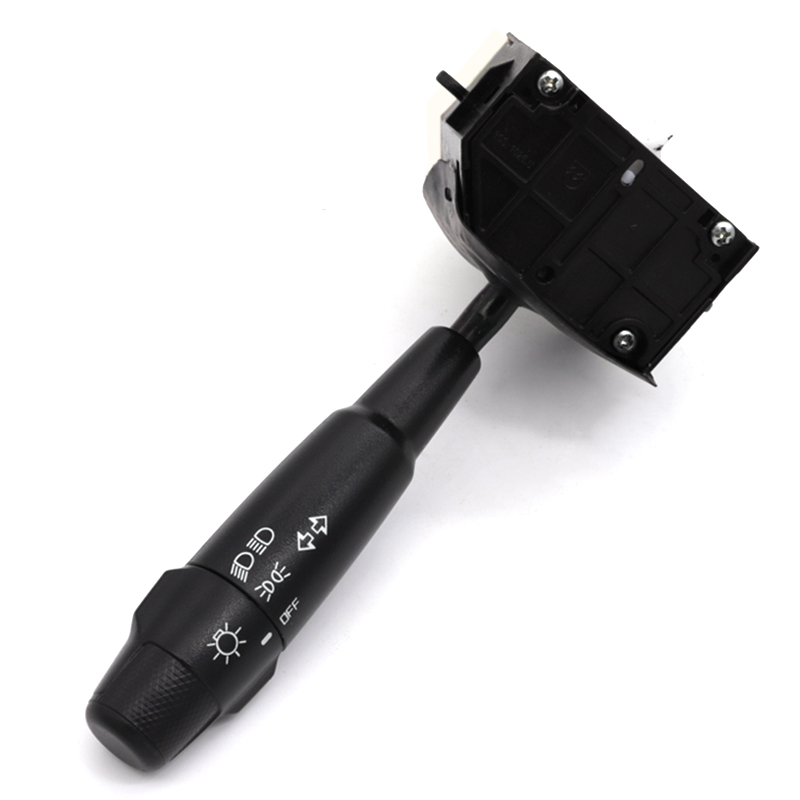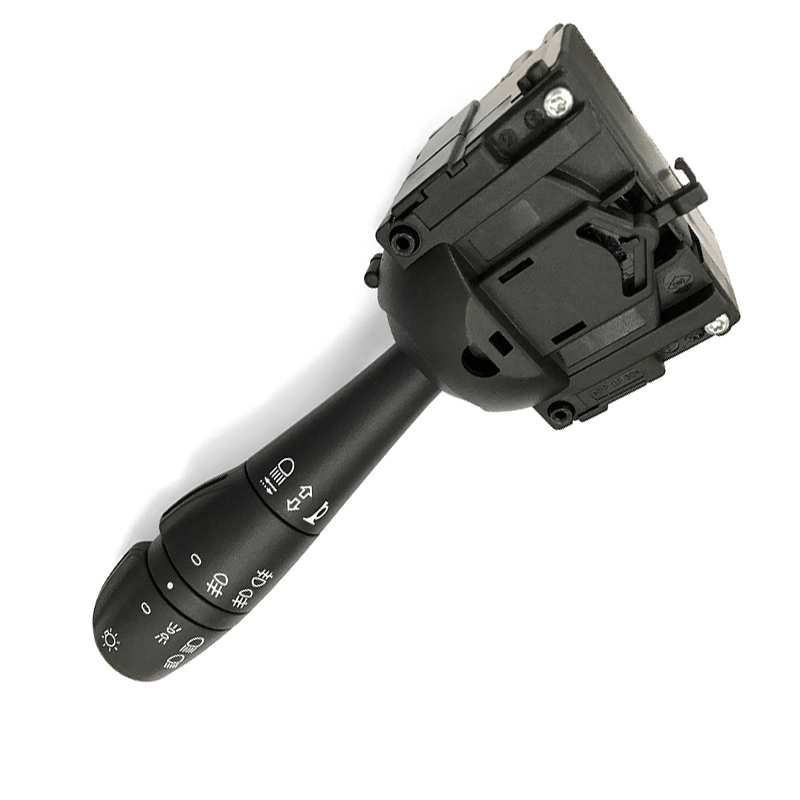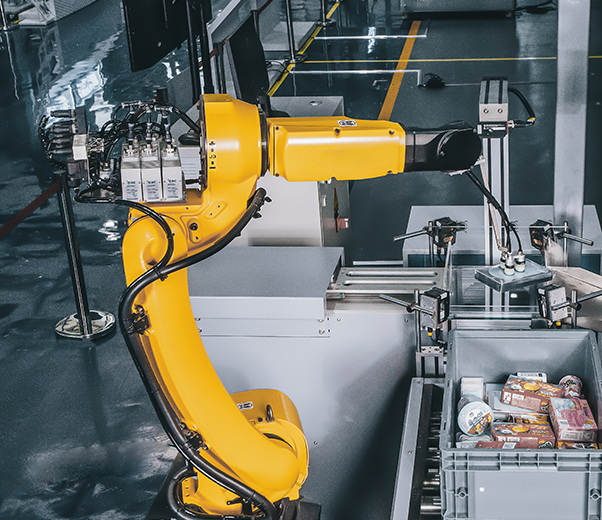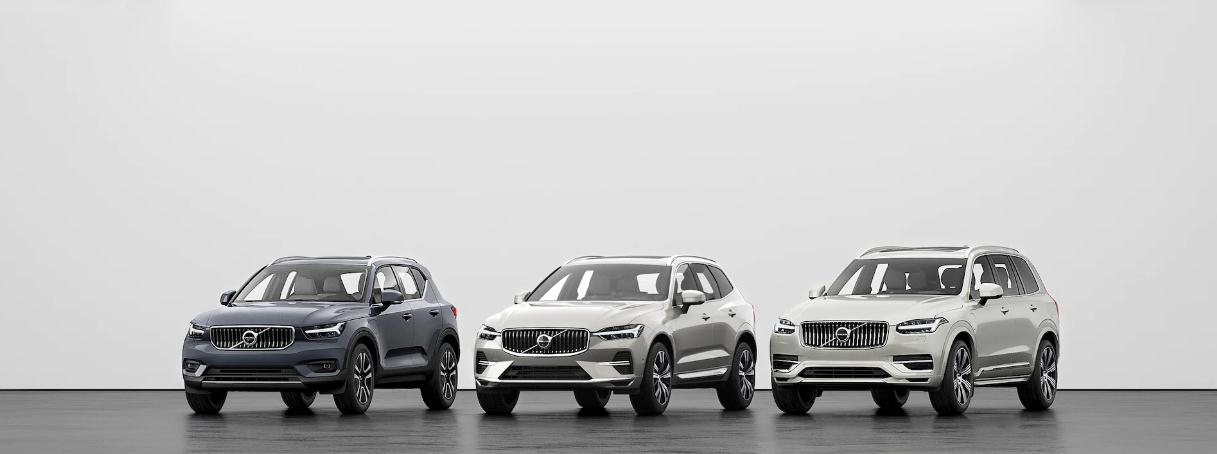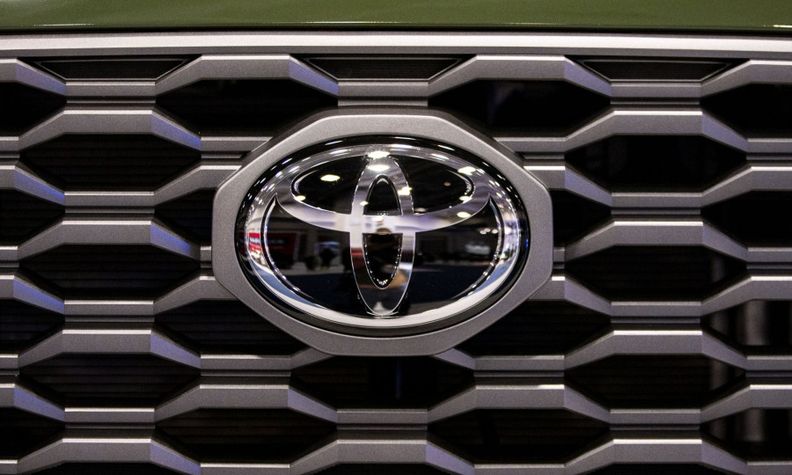Tesla, Hyundai did not chew the Indian market, BYD, Volkswagen can break through the success
India's new energy vehicle market is getting more and more lively.
Recently, according to the interface news and other media reports, BYD announced that it will launch its pure electric vehicles in the Indian market, which also marks BYD since the sea in Europe, Singapore and Thailand and other countries, will officially enter the new battlefield of India.
It should be noted that, in addition to BYD, there are other car companies eyeing the Indian new energy vehicle market this "cake".
In January this year, Mercedes-Benz announced that it expects to start the production and sales of the electric car EQS in India this year; five months later, Volkswagen announced plans to sell the ID.4, an all-electric SUV, in the Indian market next year.
In August this year, Suzuki Motor also announced plans to jointly develop an all-electric vehicle with Toyota Motor and launch it in the Indian market in 2025.
Before BYD, Mercedes-Benz and Volkswagen, the new players, were looking at the Indian new energy vehicle market, there were actually some car companies who were trying their luck in this market.
As early as 2016, Tesla CEO Elon Musk had a plan to enter the Indian new energy vehicle market, and said it was likely to start selling Tesla's products in the Indian market in 2019.
Unbeknownst to Tesla, by 2019 Hyundai preempted the Indian market with the launch of a pure electric model called Kona EV. After a year or two of testing the waters, it announced at the end of last year that it would increase its investment in electric vehicles in India and plans to invest 40 billion rupees (equivalent to about 3.485 billion yuan) and launch at least six electric vehicle products in India by 2028.
First Tesla, Hyundai, followed by BYD, Volkswagen and Mercedes-Benz, why are these car companies so obsessed with the Indian new energy vehicle market?
From a global perspective, India has become the world's fourth largest auto market after China, the United States and Japan, and by 2025 India may surpass Japan and become the world's third largest auto market. Based on this volume, India also has a greater ambition in the field of new energy vehicles - 40% of new vehicles sold in India by 2030 will be new energy vehicles.
In the face of this fast-growing new energy vehicle market, it will naturally attract car companies such as Tesla, BYD and Volkswagen to layout, in order to grab more "cake" to enhance their own voice in the global new energy vehicle industry.
But it is undeniable that the Indian new energy vehicle market is not a piece of cake, because this market not only has strong local enterprises such as Tata Motors, but also the Indian government has a relatively strict threshold for overseas companies to enter, so that the first to enter the market Hyundai and Tesla have not accounted for much market share in this market.
After such a precedent, can BYD, VW and other new players run through the Indian new energy vehicle market?
01
India's new energy vehicle market, many car companies flocked to the market
BYD has made another move in the overseas chess game.
This week, BYD launched its first pure electric SUV - ATTO 3 model in the Indian market, and the sale of this model also marks BYD's official entry into the local Indian new energy passenger car market. The ATTO 3 is actually BYD's BYD Yuan PLUS sold in the domestic market, and the model is also the main product of BYD's overseas business, according to Connected Travel.
For this layout, BYD has done a warm-up in advance. In the middle of last month, BYD India electric passenger car business senior vice president Sanjay Gopalakrishnan has announced that BYD plans to enter the Indian electric car market, and in the official account of India released a Yuan PLUS model listing publicity map.
In terms of price, BYD plans to price the ATTO 3 at around INR 2.5 million, equivalent to about 218,000 yuan, a pricing that is more expensive than the 13.78-165,800 yuan price range of the Yuan PLUS in the domestic market, but BYD also said that it would later assemble the ATTO 3 in its factory in southern India with an annual capacity of 10,000 units to further reduce costs.
It should be noted that BYD is no stranger to the Indian market.
As early as 2007, BYD entered the Indian market, and based on the rapid development of the global cell phone industry at that time, it set up a local factory and employed local workers to produce batteries and components for cell phone manufacturers at a lower cost.
Then, in 2013, BYD brought electric buses to India and partnered with Indian company Olektra Green Technologies to set up a factory to develop and manufacture electric buses. Based on this, BYD also started the layout of electrification in the Indian market.
In January this year, BYD brought its e6 model to the Indian market. According to its introduction at that time, this model is priced at INR 2.86 million (equivalent to about 250,000 yuan) in India, and will mainly be sold to local B-end customers in India for local net car operation.
If BYD's previous layout of electrification in the Indian market is geared towards the local B-end market, then the launch of the ATTO 3 model is a real sale to the local C-end consumers in India. Thus, in the industry's view, perhaps the previous BYD's various layouts in the Indian market are all preparations for the development of the C-end new energy vehicle market.
In BYD's stride into the Indian new energy vehicle market at the same time, many car companies are also rubbing their fists.
In January this year, Mercedes-Benz announced that it expects to launch the production and sales of its EQS electric cars in India, according to related media reports. "Mercedes-Benz is the first luxury automaker to assemble electric vehicles in India and expects to start selling locally assembled EQS electric vehicles in India in the fourth quarter of this year." Martin Schwenk, head of Mercedes-Benz India, said this at the time.
As it turns out, Mercedes-Benz is on track to deliver on its promise to the Indian market. This month, Mercedes-Benz announced that the plant in Pune, India, officially began production of the all-electric EQS580 4MATIC, making it the first overseas plant outside of Germany to build Mercedes-Benz's flagship electric vehicle.
According to Connected Travel, the EQS580 4MATIC model can achieve a maximum speed of 210km/h, while having a range of 677km, the model is priced at INR 15.5 million (equivalent to about 1,352,500 yuan) in India.
Volkswagen, a traditional German car company along with Mercedes-Benz, is also quickly eyeing the Indian new energy vehicle market.
In June this year, Volkswagen announced plans to start selling its all-electric ID.4 in the Indian market next year, and Ashish Gupta, brand director of Volkswagen India's passenger car division, followed up by saying that VW will start testing the technical performance of the ID.4 in India around September this year to determine whether it needs to be adjusted to local weather conditions and environmental conditions.
Ashish Gupta also said that if the tests are completed, VW will launch a limited number of ID.4s for sale in the Indian market next year, and expects to start local assembly of electric cars in India around 2025 or 2027.
Then at the end of August this year, Japanese automaker Suzuki also announced that it will jointly develop an electric car with Toyota and will launch it in the Indian market, which will be developed and manufactured based on a dedicated platform for compact electric cars developed jointly by the two companies.
Suzuki also revealed that in order to promote its own products in the Indian new energy vehicle market, it plans to invest more than 100 billion Indian rupees (about 1.25 billion U.S. dollars) to build a local factory in India, and the new factory will be put into production from 2025.
From Mercedes-Benz and Volkswagen, to Suzuki and Toyota, to BYD, these car companies have flocked to the Indian new energy vehicle market this year, and have their own different ambitious plans for this market. But for these car companies, their road ahead in the Indian market is not smooth.
02
India's new energy battlefield, opportunities and challenges coexist
It is not for nothing that so many car companies are looking at the Indian new energy vehicle market.
With the emergence of the new energy vehicle industry since 2000, after more than 20 years of rapid development, this track has now taken shape. According to data released by the International Energy Agency (IEA), global sales of new energy vehicles exceeded 4.22 million units in the first half of this year, an increase of 66.38% year-on-year.
India, based on its huge population size, has made itself a major automotive market worldwide. That's why, in the face of the development opportunities of the new energy vehicle industry, India has also put forward its own plan - by 2030, 40% of new vehicles sold in India are pure electric vehicles; by 2047, the centenary of India's founding, this ratio will reach 100%.
In order to achieve this goal, India launched in 2015 to encourage the acceleration of the manufacture and use of hybrid and electric motor vehicles policy (FAME), which provides that where the purchase of hybrid energy or new energy vehicles in line with the policy, the government will give appropriate subsidies according to the sale price.
India's new energy vehicle subsidy policy rules, screenshot from the FAME official website
This year, the Indian government plans to continue to invest in the domestic new energy vehicle industry, to increase the production of electric vehicles and build electric vehicle charging facilities across the country.
Traditional car companies such as Volkswagen, Mercedes-Benz and Toyota have been laying out their global presence in the last two years in order to secure their strength in the global new energy vehicle sector, and domestic car companies such as BYD have been expanding their global reach.
But these car companies want to gnaw the Indian market this "cake" is not easy.
Just three years after Musk arrived in China with a few Tesla Model S in 2014, he proposed a plan to enter the Indian market. When a user asked on social media about Tesla's plans to enter India, Musk replied that he hoped it would happen that summer.
The Indian government has also made it clear more than once that it welcomes Musk's idea to enter India. In January this year, senior Indian government officials took to social media to invite Musk, hoping that Tesla could come to India to sell cars and build factories, and promised to provide all the necessary help.
But it turns out that Tesla has not achieved its goal of entering India up to now, and the reasons behind this also reveal the special nature of the Indian new energy vehicle market.
The main point of contention between Tesla and the Indian government is the agreement on tariffs. According to India's current tariff policy, the tariff on imported cars is 60%-100%, with 60% tariff on imported cars priced below INR 3 million (equivalent to RMB 262,200), and products like Tesla's have exceeded this price, thus requiring 100% tariff to be paid to the Indian government, so much so that Musk has exclaimed, "This is the highest tariff in the world. This is the highest tariff in the world".
In response, Tesla has proposed to the Indian government to cut the import tariff on electric cars to 40%, but the Indian government has said that the tariff reduction would require local factories to manufacture and sell the products in India. It is understandable that the Indian government would ask for this, because the introduction of Tesla's factory can not only create more jobs, but also drive the development of India's local new energy vehicle industry chain and improve.
But Musk did not agree to this request, because in his view India is a new market, first with imported products in India to sell Tesla's models in order to test the market acceptance is more secure, as he had said frankly in social media: "If Tesla can be successful in importing cars, then the possibility of building a factory in India is very high."
After years of continuous tug-of-war between Tesla and the Indian government, there is no mutually satisfactory solution as of now, and thus Tesla's plan to enter India has been put on hold.
If Tesla's unsuccessful entry into the Indian market was trapped by tariffs and government communication, Hyundai's failed attempt was trapped by the blockage of local players.
In 2019, Hyundai launched a new energy model called Kona EV in the Indian market, which was then priced at INR 2.53 lakh (equivalent to about Rs 22.06 lakh). To boost sales of the product, Hyundai also established a partnership with Indian Oil Corporation to open fast-charging stations at select gas stations in Mumbai, Delhi, Chennai and Bangalore.
That was also the year that Tata Motors, a local car manufacturer, quickly converted its popular Nexon fuel car into an electric version of the Nexon, with an official starting price of INR 1.32 million (approximately RMB 115,800), which, when combined with subsidies from the Indian government, could reduce the price of the Nexon. The price of the model can be reduced to about RMB 99,000.
In addition, the range of Tata's Nexon and Hyundai's Kona EV is not much different in India under ARAI cycle conditions, so the Nexon, which is better priced and has better performance, will steal the limelight from the Kona EV once it is launched.
With the success of the Nexon, Tata is launching its second new energy model, the Tigor, in 2021 at a price not much different from that of the Nexon, at 100,000 RMB.
Based on the help of these two models, it also makes Tata Motors a giant player in the current Indian new energy vehicle market. According to the Indian media 91 Mobiles, the total sales of new energy vehicles in India in July this year was 3,295 units, of which Tata Motors occupied the first place with 2,878 units, an increase of 323.2% year-on-year, which is close to 90% of the total sales in that month.
On the contrary, Hyundai only achieved sales of 58 units in the month, although it also maintained a year-on-year growth of 163.6%, but its sales accounted for only 1.8% of the total sales of the month, compared with Tata Motors, the gap is very large.
Top 5 distribution of new energy models in India in July 2022, data from 91 Mobiles, Connected Travel mapping
Tata Motors will grow rapidly in the Indian new energy vehicle market, which also has the support of the Indian government behind it. "A large part of the reason for Tata's success comes from the Indian government's protection of its policies, based on the high tariffs the government charges for other non-local car companies, to the point of keeping competing companies like Tesla out of the market." Zhang Xiang, director of the New Energy Vehicle Technology Research Institute at Jiangxi New Energy Technology Vocational College, explained to Connected Travel.
From this point of view, although Tesla and Hyundai have long been looking at the Indian new energy vehicle market, but based on factors such as high tariffs and the squeeze of local companies, so that their pioneering are in a losing situation. Then there is such a precedent, BYD, Mercedes-Benz and Volkswagen and other new group of players can run through the Indian market, become a matter of concern for many people.
03
Run through the Indian new energy market.
BYD, Volkswagen have hope?
For BYD, Volkswagen and other new players, Tesla, Hyundai encountered the same challenges they will encounter.
The first challenge is the high tariff, which is also blocking Tesla's entry into India "blocking tiger". If you look at the price, BYD ATTO 3 is located at about 200,000 yuan, tariffs are in the 60% bracket.
The Mercedes EQS580 4MATIC, which is priced at more than $1 million, will face the same 100% tariff as Tesla if it is sold in the Indian market.
One detail should be noted, Mercedes-Benz announced the layout of the Indian market at the same time, but also with Tesla called on the Indian government to reduce the import tariff of electric vehicles, but in the end Tesla chose to continue to adhere to their choice, while Mercedes-Benz had no choice but to compromise, announced that it will build a factory in India, thus providing the basis for Mercedes-Benz to negotiate with the Indian government to reduce tariffs.
In this regard, according to the IT Times, citing sources familiar with the matter, the relevant Indian car manufacturers have proposed to reduce the tariff rate of car imports from the UK to 30%. However, it should be noted that there are only a few car factories operated by globally renowned automakers such as Nissan, BMW and Jaguar Land Rover in the UK, so BYD, Volkswagen and Mercedes-Benz, as well as Tesla, will still not be able to enjoy this policy benefit.
According to Junyi Zhang, Managing Partner of Oliver Waldo, based on the recent period, the Indian government has made large-scale changes to tariff-related policies, especially the 10% tariff imposed on cell phone products last month, there are still certain risks and uncertainties for the entry of BYD and other auto companies.
Even after crossing the tariff threshold, BYD and Volkswagen immediately to face the local car companies such as Tata block.
At the end of last month, Tata launched its new model - Tiago EV, the same as the Nexon pure electric version, this new model is also from the fuel car Tiago "oil to electricity" transformation, this model is priced at 849,000 Indian rupees ( This model is priced at INR 849,000 (approximately RMB 74,200).
In terms of price, the Tiago EV is not only much cheaper than the BYD ATTO 3 and Hyundai Kona EV, but even less expensive than the two models sold under the brand, making it the "lowest priced electric car in India".
After seeing the painful experience of Hyundai Kona EV, in the industry's view, Tata Motors' "low-price offensive" may continue to work, and it is still an unknown whether BYD, Volkswagen and other car companies' higher-priced products can successfully open the market.
India's new energy vehicle market has long been characterized by serious disparities in the distribution of rich and poor consumers. Chen Zhou, assistant general manager of SAIC India, said in a media interview, "Due to the income level and taxation, the local mainstream car consumption in India is concentrated in the A0-level market, with a total car length of no more than 4 meters and a price basically concentrated between 50,000 and 60,000 yuan, with a price of more than 100,000 yuan even if it is a relatively luxurious model."
At the same time, in the Indian car market, consumers with low income will prefer to buy cheaper models, or two- and three-wheelers, while wealthy groups with higher income will prefer luxury, higher-priced fuel car models, so at this stage the medium-priced new energy models are a niche track.
Underpinned by this factor, Tata Motors' lower-priced EV products may be able to continue to maintain sales dominance in the Indian market in the future.
In response to this visible risk, BYD, Volkswagen and other car companies may have thought of a solution - to cooperate with local Indian companies to enhance their own brand influence in the region.
For example, in May this year, Volkswagen signed a cooperation agreement with Mahindra, a local Indian car manufacturer, for which the former will provide technical support for the latter's modular electric platform (MEB).
In terms of cooperation with local enterprises, BYD has more advantages than VW, after all, it has been in the Indian new energy market layout for 5-6 years, and local enterprises have also established a relatively good cooperation base.
But BYD and Volkswagen want to run through the Indian new energy vehicle market, there are some other obstacles.
As the market penetration rate of new energy vehicles gradually increases, the replenishment of new energy vehicles has become an important demand that needs to be met. But for this, the situation in India is not optimistic.
According to data published by Bloomberg, there were only 350 charging points across India in 2017, while there were about 215,000 charging points in China at that time. And by this year, the number of charging stations in India was still less than 2,000, while the total number of charging stations in China had exceeded 70,000.
Based on this factor, in Connected Travel's view, it will greatly hinder local consumers in India from choosing new energy vehicles as a tool for daily travel, thus affecting the development of the entire new energy vehicle industry in the region.
In addition, the Indian government has been in conflict about the development of the new energy vehicle industry. In the view of Liu Xiaoxue, an associate researcher at the Asia-Pacific and Global Strategy Institute of the Chinese Academy of Social Sciences, India wants to rapidly promote the development of the new energy motor vehicle industry, but does not want to let foreign manufacturers flood its domestic market like the cell phone industry. But as a relative latecomer in the auto industry, it is tough for India to balance these two goals.
Combined with the above analysis, BYD, Volkswagen and Mercedes-Benz want to run through the Indian new energy vehicle market, there are many challenges to be solved, but it is certain that there may be many car companies coveting this market afterwards, and the war in this market will continue to burn.
After all, although the Indian new energy vehicle market is difficult to chew, but this market is still a blue ocean, for many car companies, it is also the key chip of each in the future global new energy vehicle battlefield to compete for advantage.
